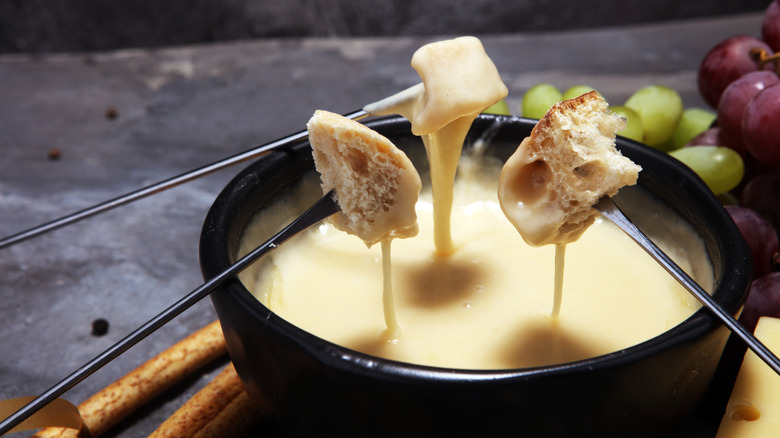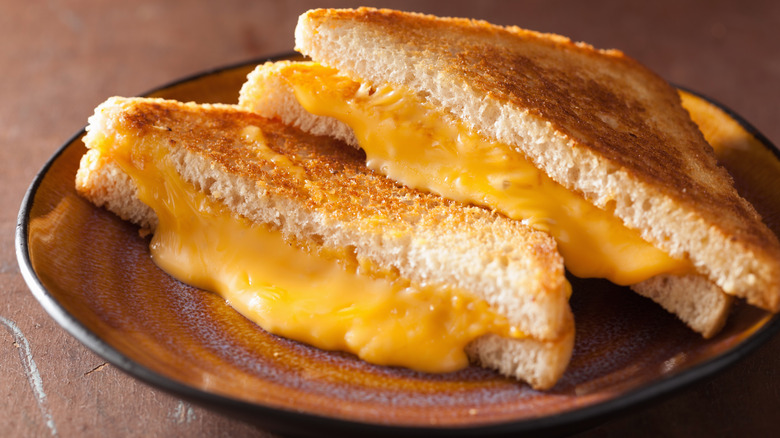Why Certain Cheeses Are Better At Melting Than Others
When you heat certain cheeses up, you'll find they turn into a grainy, oily mess while others turn into that uniform, silky cloak you were really hoping for. What makes some cheeses so good at melting and others such a disaster? First of all, we've got to start with what cheese is really made of. When it comes down to it, cheese is a mixture of fat and water bound together by protein. The milk protein involved here is called casein and it's only found in mammals' milk, which helps explain why vegan cheese doesn't melt as well.
When a cheese is heated, the fat inside turns to liquid. Heat it even further and the bonds that hold the casein together start to break apart, which is how you get that droopy blanket effect. The important part when it comes to melting is how well the cheese is able to maintain its emulsion as the heat separates the proteins. If the moisture and fat seep out from the cheese right away, you get a cheese with oil that pools on top, which isn't so appealing.
Dry cheeses like Parmesan don't have a lot of water in them, which means the oil is wrung right out as it heats up (and then gathers together). Young cheeses like mozzarella contain enough water that fat molecules can't squeeze out and bead up as easily, making them ideal for melting. Havarti, Muenster, and fontina are great melting cheeses.
American cheese includes an ingredient that makes it the perfect melting cheese
American cheese is a unique product in that it contains a little ingredient called sodium citrate, which is an emulsifying salt that allows the stuff to stay silky smooth no matter what temperature it is. You've had American cheese on top of burgers and in the best grilled cheese sandwiches, so you already know you can count on it to give you that rich, nearly sauce-like texture when it's melted. Since sodium citrate isn't a naturally occurring ingredient, American cheese is more processed than other types of cheese, but it definitely has its uses.
In case you don't want to do your own testing, we've already compiled a list of great melting cheeses that fit right into grilled cheese sandwiches. You can be sure that most of them will also work to give you the stretch and ooze you're looking for if you're going to use them for other purposes. The best rule of thumb is to use younger cheeses that aren't dry and crumbly. If you're feeling really adventurous, you can even try making your own nacho cheese at home with any cheese you can get your hands on.

